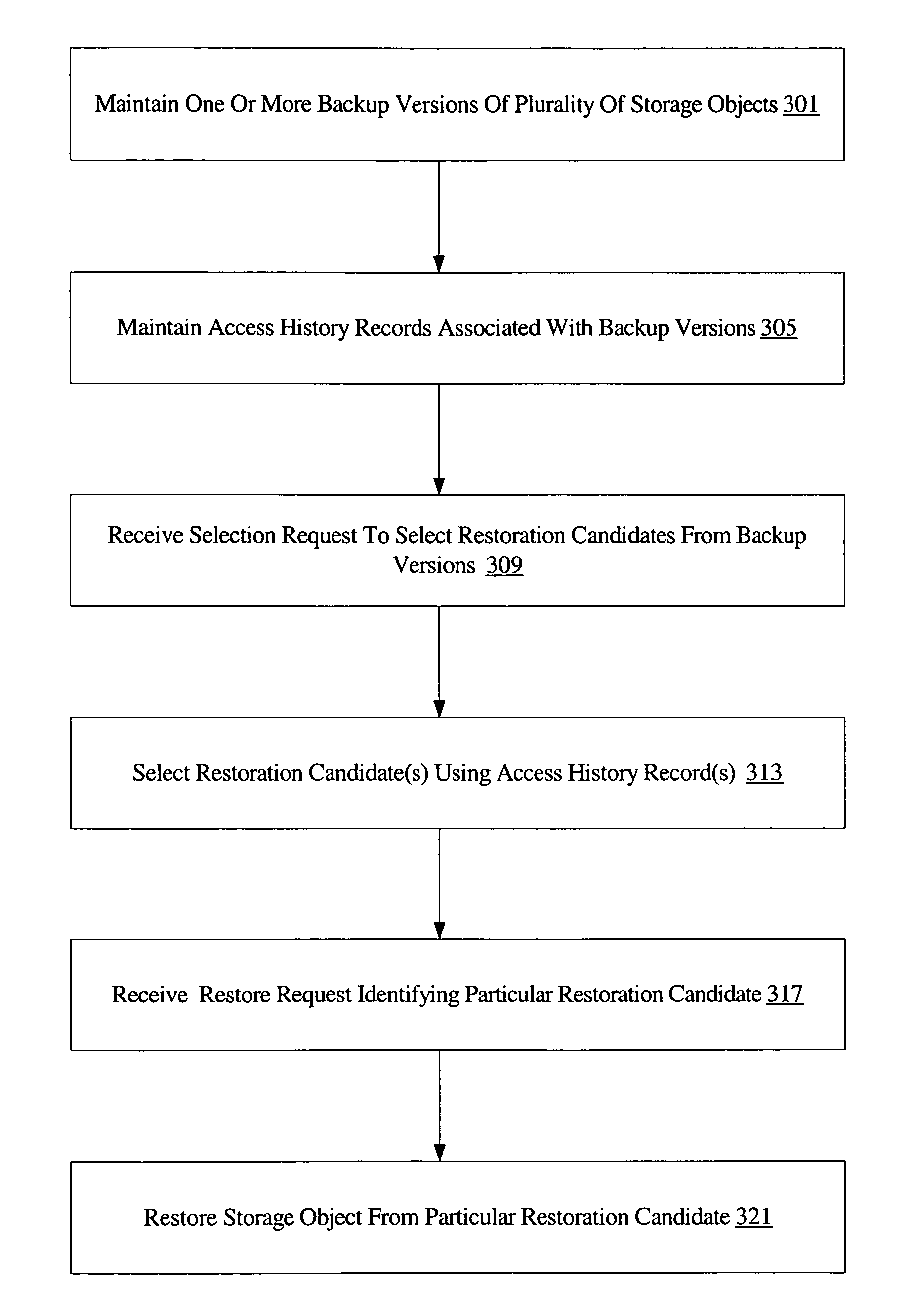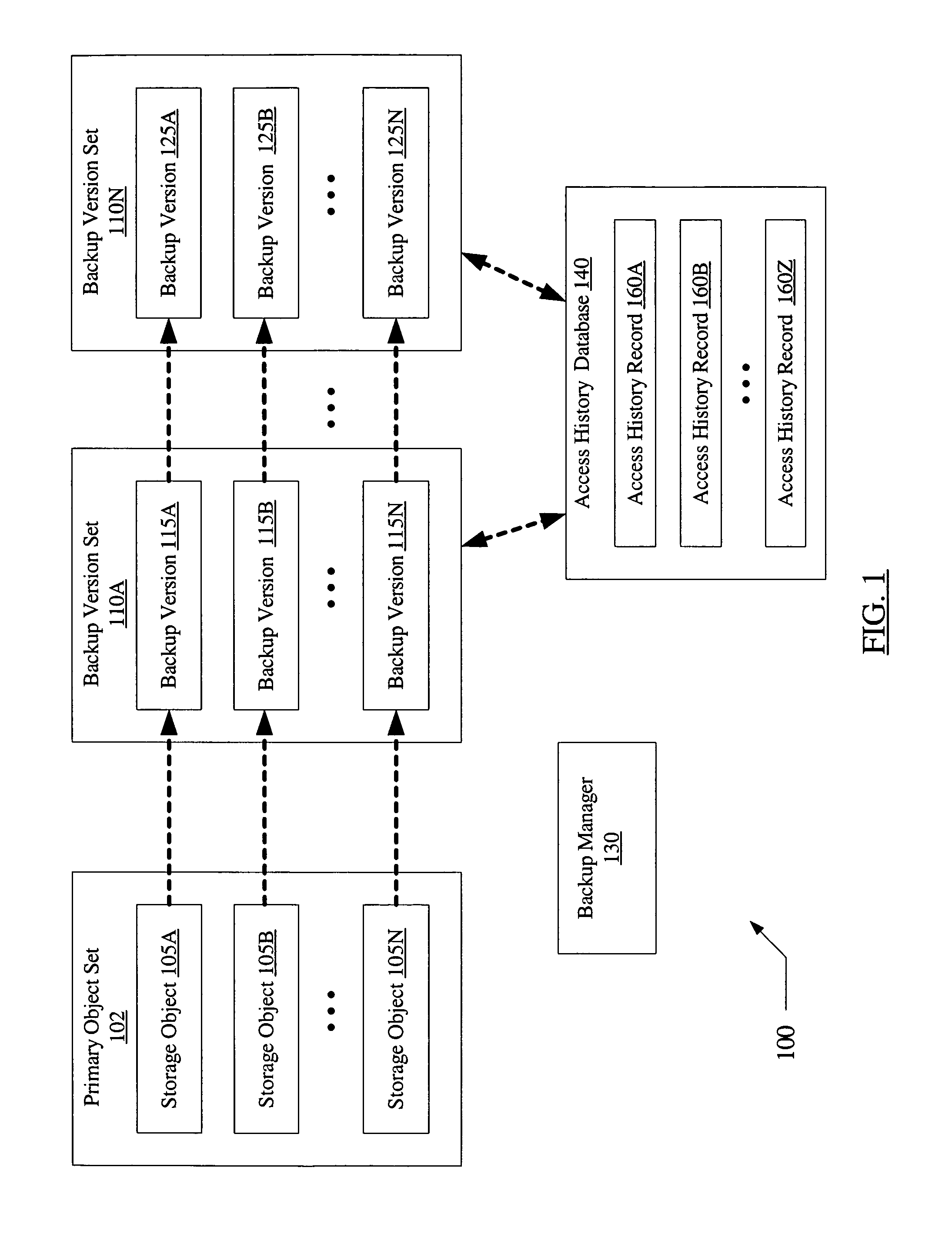Using recent activity information to select backup versions of storage objects for restoration
a technology of activity information and storage object, applied in the field of computer systems, can solve the problems of data corruption, loss of critical data in such environments, and single backup version of production data may not be sufficient to meet the availability requirements of modern mission-critical applications, and achieve the effect of reducing overhead
- Summary
- Abstract
- Description
- Claims
- Application Information
AI Technical Summary
Benefits of technology
Problems solved by technology
Method used
Image
Examples
Embodiment Construction
[0020]FIG. 1 is a block diagram illustrating a system 100 according to one embodiment. As shown, system 100 includes a primary object set 102 including a plurality of storage objects 105 (i.e., storage objects 105A, 105B, . . . 105N) and a backup manager 130. Backup manager 130 may be configured to maintain one or more backup versions of storage objects 105, such as backup version sets 110A-110N. Primary object set 102 may be resident at one or more primary hosts, and backup version sets 110 may be stored at secondary and / or tertiary servers in some embodiments. Each backup version set 110 (e.g., backup version set 110A or 110N) may include respective backup versions of storage objects 105. For example, backup version set 110A includes backup version 115A corresponding to storage object 105, backup version 115B corresponding to storage object 105B, etc., and backup version set 110N includes backup version 125A corresponding to storage object 105A (and / or backup version 115A), backup...
PUM
 Login to View More
Login to View More Abstract
Description
Claims
Application Information
 Login to View More
Login to View More - R&D
- Intellectual Property
- Life Sciences
- Materials
- Tech Scout
- Unparalleled Data Quality
- Higher Quality Content
- 60% Fewer Hallucinations
Browse by: Latest US Patents, China's latest patents, Technical Efficacy Thesaurus, Application Domain, Technology Topic, Popular Technical Reports.
© 2025 PatSnap. All rights reserved.Legal|Privacy policy|Modern Slavery Act Transparency Statement|Sitemap|About US| Contact US: help@patsnap.com



